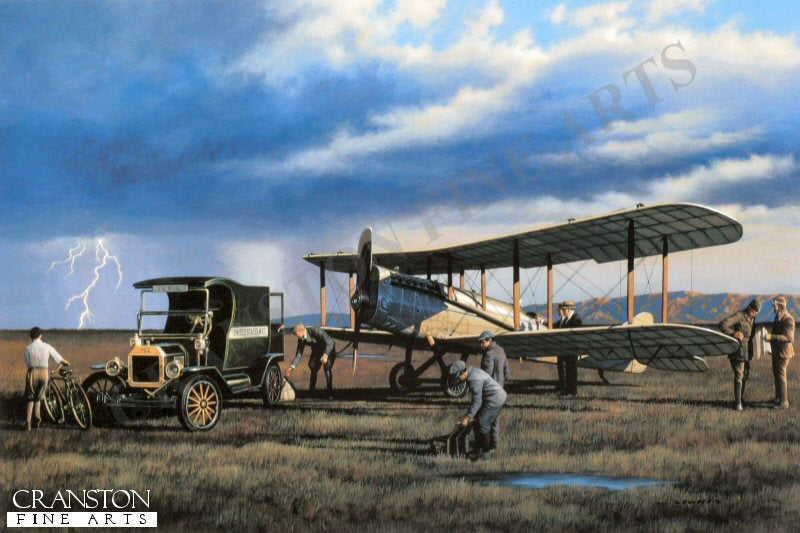- Sku:
- Vendor: Military Aviation Art Prints
Flying Postmen by Stan Stokes. (B)
The inauguration of air mail service in the United States in 1918 would prove to be a very significant development in the evolution of the aviation industry. Spearheaded by Assistant Postmaster General Otto Praeger, Congress approved funding for a limited service between New York, Philadelphia, and Washington. The inaugural flights took place in May of 1918 utilizing US Army pilots and Curtiss JN-4H aircraft. Although initial public demand for air mail service was negligible, the Post Office demanded a damn-the-weather attitude from its pilots. This resulted in the Army withdrawing from this arrangement out of the fear of losing pilots and equipment. Not to be deterred, the Post Office ordered six new Standard bi-planes, and recruited its own pilots. Max Miller signed on as the Air Mail Services first civilian pilot, and flew his Standard from College Park Maryland on August 12, 1918, which was the first air mail flight utilizing civilian aircraft and pilots. The Standard which was designed as an Army trainer had developed a bad reputation for its Hall-Scott engine catching fire, and had been grounded by the Army. Re-fitted with the 150-HP Hispano Suiza engine, the Standard was faster than the Curtiss Jennies and had a much greater range. As the air mail service expanded westwards, the Allegheny Mountains presented a formidable obstacle for these fragile aircraft and their pilots, which had to navigate by following railroad tracks or other landmarks, often in terrible weather. Referred to as the Hell Stretch the mountains claimed many lives in what came to be termed the Suicide Club. E. Hamilton Lee was one of the early heroes of the Air Mail Service, pioneering routes between Chicago and Minneapolis and Chicago and St. Louis. Lee logged more than 4 million miles prior to his retirement in 1949. In the mid-1920s the Post Office had inaugurated night flying utilizing a unique series of beacons along its routes. The de Havilland D.H. 4 (depicted in Stan Stokes painting) became one of the mainstays of the Post Offices fleet, and constant modifications were made to these aircraft including experiments with air-to-ground radios, and ingenious navigational aids and flight instruments. In the 1920s the Post Office opened up many of its routes to private carriers, which assisted many early commercial airlines in getting started in business. In the late 1920s many new aircraft debuted as mail carriers including the Stearman C-3MB, the Pitcairn PA-5, and the Boeing 40B. The Northrup Alpha, a unique all-metal, cantilever-wing design was used to pioneer coast-to-coast routes in the early 1930s. One lasting byproduct of this era are the numerous air-mail stamps and first day covers which flew the world, and are now prized by both aviation buffs and stamp collectors alike.
Just two of this print edition now available.
Limited edition of 100 giclee art prints.
Size 21 inches x 14 inches (53cm x 36cm)
Have a question?

Flying Postmen by Stan Stokes. (B)


